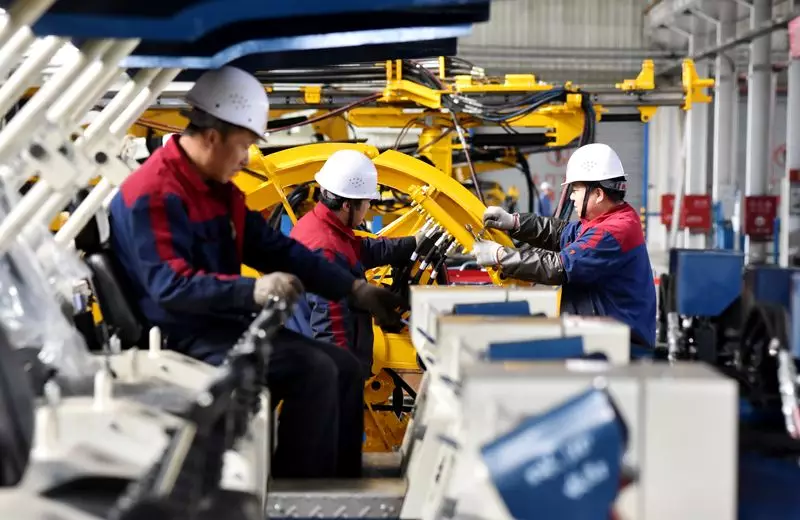In November 2023, China’s economy presented a mixed picture that raises significant questions about its future trajectory. While industrial output showed slight improvement, retail sales fell short of expectations, reflecting ongoing challenges in consumer confidence and economic stability. The backdrop of increasing tensions with the United States complicates matters, as Beijing faces the prospect of heightened trade tariffs under a continuing Trump administration.
China’s National Bureau of Statistics (NBS) revealed that industrial output saw a year-on-year growth of 5.4% in November, a slight increase from 5.3% in October. This figure surpassed a Reuters poll expectation of 5.3%, providing a glimmer of hope for policymakers. Despite this growth, it is crucial to contextualize these numbers: they reflect an economy still battling the repercussions of a prolonged trade conflict with the U.S. and domestic challenges stemming from weak consumer confidence.
Moreover, the modest uptick in industrial output could be attributed to several factors, including government initiatives aimed at stimulating production and encouraging exports. However, the sustainability of this growth remains questionable, especially when juxtaposed with the struggles in the retail sector.
Retail Sales Disappoint Amidst Consumer Weakness
In stark contrast to industrial success, retail sales growth faltered, registering only a 3.3% increase in November compared to 4.8% the previous month. Analysts had anticipated a 4.6% rise, emphasizing a persistent trend of weak domestic consumption. Even with promotional events such as major online shopping festivals and government-backed trade-in programs designed to boost sectors like automobiles, consumer spending failed to gain momentum.
Factors contributing to this lackluster performance include lingering effects from the ongoing property crisis and a general pullback in discretionary spending. The significant percentage of household savings tied up in real estate continues to inhibit broader economic recovery, leaving many consumers hesitant to spend.
Fixed Asset Investment Slows
Compounding the challenges is the slow pace of fixed asset investment, which increased by a mere 3.3% from January to November compared to the same period last year. Again, this falls short of expectations, with analysts predicting a 3.4% rise. This slowdown suggests reduced business confidence and tempered investment in critical sectors, further complicating China’s recovery narrative.
NBS spokesperson Fu Linghui reassured that the trajectory of consumption recovery has not wavered, signaling government readiness to enhance policies aimed at reviving domestic demand. The Central Economic Work Conference (CEWC) underscored this commitment, as top leaders pledged to raise the budget deficit and use fiscal tools to stimulate consumption.
As part of its strategy, the Chinese government is focusing on “appropriate looseness” in its monetary policy, marking a significant shift in stance after 14 years of tightening. This policy adjustment demonstrates the urgency with which Chinese leaders are pursuing economic stabilization amid a complex landscape of global uncertainties.
The property market, a vital component of China’s economy, is still facing headwinds, with new home prices experiencing the slowest decline in 17 months. Despite government efforts to incentivize homebuying through lower mortgage rates and reduced down payments, analysts remain skeptical of a robust recovery in real estate.
Looking forward, policy advisors recommend maintaining a 5.0% growth target for the next year. Some economists believe that bolstering domestic demand may help mitigate the adverse effects of anticipated U.S. tariffs on Chinese exports. The potential for tariffs exceeding 60% under the incoming U.S. administration adds a layer of complexity, prompting discussions around currency devaluation as a possible countermeasure. Nevertheless, Chinese officials emphasize their commitment to maintaining the yuan’s stability.
The economic landscape in China is characterized by a confluence of positive industrial growth and disappointing retail sales, a situation that is further exacerbated by external pressures from the United States. As Beijing navigates these challenges, the focus must remain on stimulating domestic demand to counteract weak consumption trends and secure stable economic growth in the face of potential tariffs and geopolitical tensions. The coming months will be critical in determining whether China’s policymakers can effectively balance these competing demands to foster a resilient economy.

